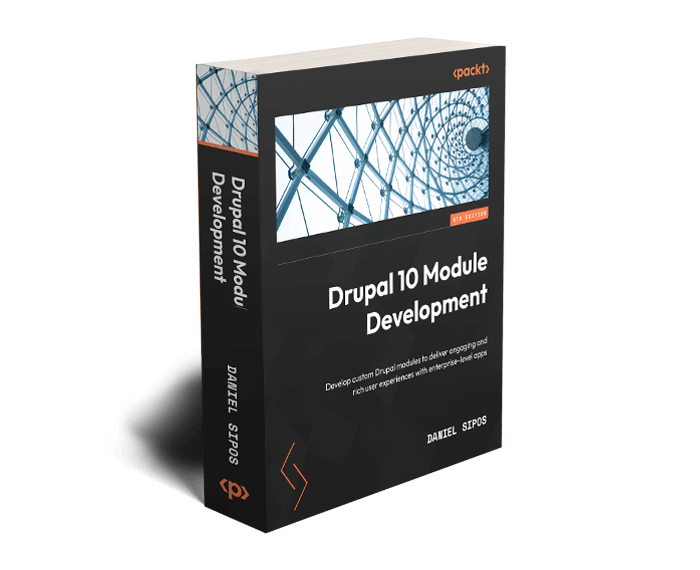
With its latest release, Drupal 10, the popular open source CMS platform has been updated with new functionalities for building complex Drupal apps with ease. This fourth edition of the Drupal Module Development guide covers these new Drupal features, helping you to stay on top of code deprecations and the changing architecture with every release.
The book starts by introducing you to the Drupal architecture and its subsystems before showing you how to create your first module with basic functionality. You'll explore the Drupal logging and mailing systems, learn how to output data using the theme layer, and work with menus and links programmatically. Once you've understood the different kinds of data storage, this Drupal guide will demonstrate how to create custom entities and field types and leverage the Database API for lower-level database queries. You'll also learn how to introduce JavaScript into your module, work with various file systems, and ensure that your code works on multilingual sites. Finally, you'll work with Views, create automated tests for your functionality, and write secure code.
By the end of the book, you'll have learned how to develop custom modules that can provide solutions to complex business problems, and who knows, maybe you'll even contribute to the Drupal community!
What you will learn
- Develop custom Drupal modules for your applications
- Master different Drupal subsystems and APIs
- Model, store, manipulate, and process data for effective data management
- Display data and content in a clean and secure way using the theme system
- Test your business logic to prevent regression
- Stay ahead of the curve and write PHP code by implementing best practices
Who this book is for
If you are a Drupal developer looking to learn Drupal to write modules for your sites, this book is for you. Drupal site builders and PHP developers with basic object-oriented programming skills will also find this book helpful. Although not necessary, some Symfony experience will help with understanding concepts easily.
Table of Contents
- Developing for Drupal
- Creating Your First Module
- Logging and Mailing
- Theming
- Menus and Menu Links
- Data Modeling and Storage
- Your Own Custom Entity and Plugin Types
- The Database API
- Custom Fields
- Access Control
- Caching
- JavaScript and the Ajax API
- Internationalization and Languages
- Batches, Queues, and Cron
- Views
- Working with Files and Images
- Automated Testing
- Drupal Security
